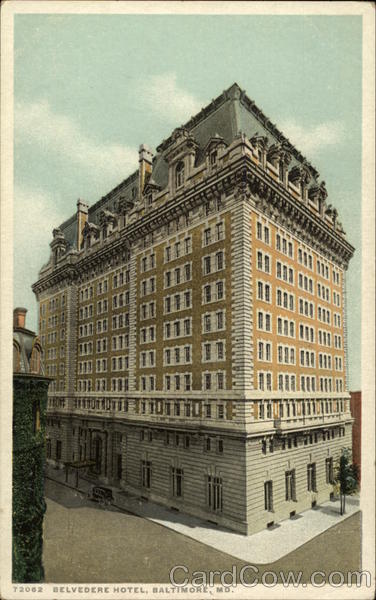In this screencast I'll show you how to add images to your GitHub Readme files. You can use the Markdown or HTML syntax for this, I'll show you both versions. Make sure to upload images to your own repository and provide the relative path to them. Markdown is a simple language used to add formatting to text. Trello uses a modified version of the Markdown syntax. It allows you to easily add bold, italics, links, lists, paragraphs, headers, and images and code blocks to blocks of texts.
You can add markdown to your cards in the card's description, checklists, and comments, as well as in your Trello bio. A README file is a text file (commonly readme. txt) that contains information for the user about the software program, utility, or game. README.md files are created using Markdown which you can use to format text and add images. GitHub supports embedding images into your issues, pull requests, discussions, comments and .md files. You can display an image from your repository, add a link to an online image, or upload an image.
To use a file in the build context, the Dockerfile refers to the file specified in an instruction, for example, a COPY instruction. To increase the build's performance, exclude files and directories by adding a .dockerignore file to the context directory. For information about how to create a .dockerignorefile see the documentation on this page. Docker can build images automatically by reading the instructions from aDockerfile.
A Dockerfile is a text document that contains all the commands a user could call on the command line to assemble an image. Using docker buildusers can create an automated build that executes several command-line instructions in succession. On your repository where you want to add images to markdown files, wiki pages, etc. create an Issue.
Images can be a great way to enhance your documentation in README files or other markdown documentation. While there is a standard way to add an image in markdown, the nuance is in the image's source. Here are three methods for adding images to markdown files in a GitHub repository. The GitHub Guide for Mastering Markdown has some helpful hints that can get you started with this. @JohnnyOshika I doubt anyone outside of github could definitively answer that. It might be dependent on what "user-images.githubusercontent.com" is used for.
If it is only for images uploaded to comments, then it is plausible that they could scan for the missing data relation and remove the image. I had been maintaining 2 copies of the README.md, one for local installation in /usr/share/projectname/docs, and one for github. Now, I can just use the same README.md for both since the image filenames work fine in both cases. If I want to post a copy of parts of my README somewhere else, I'll either have to host the images somewhere else or put in the raw.github.com url. FROM can appear multiple times within a single Dockerfile to create multiple images or use one build stage as a dependency for another. Simply make a note of the last image ID output by the commit before each newFROM instruction.
Each FROM instruction clears any state created by previous instructions. Before the docker CLI sends the context to the docker daemon, it looks for a file named .dockerignore in the root directory of the context. If this file exists, the CLI modifies the context to exclude files and directories that match patterns in it. This helps to avoid unnecessarily sending large or sensitive files and directories to the daemon and potentially adding them to images using ADD or COPY. To achieve this you can simply use this markdown command in your readme file ! (link-to-image) , so in my own case my snapshot was already in my project directory so all I need to do was replace the (link-to-image) with the correct image file path.
The VOLUME instruction creates a mount point with the specified name and marks it as holding externally mounted volumes from native host or other containers. The value can be a JSON array, VOLUME ["/var/log/"], or a plain string with multiple arguments, such as VOLUME /var/log or VOLUME /var/log /var/db. For more information/examples and mounting instructions via the Docker client, refer toShare Directories via Volumesdocumentation. The docker build command builds an image from a Dockerfile and a context.
The build's context is the set of files at a specified location PATH or URL. I was curious as to how to add images to my github repository so my pursuit for knowledge began and Yo ! In GitHub, you can add an image to a README.md file in three ways. In this tutorial, I am giving examples of all these three ways to show you, how to add an image to the README.md file in GitHub.
But first of all, you should know the syntax to specify an image file in the README.md or in any document in the GitHub. Relative links are not a great use here, imagine your readme is also displayed on npm that does not host the image in this way - it needs to link to GitHub. Image srcs should be on the github.com domain, not the raw.github.com subdomain and not the raw.githubusercontent.com domain. For documentation on "labs" features, master builds, and nightly feature releases, refer to the description in the BuildKit source repository on GitHub. For a full list of available images, visit the image repository on Docker Hub, and the docker/dockerfile-upstream image repositoryfor development builds.
I built it to automatically format markdown files and allow folks to sync docs/code/data from external sources. Open your GitHub repository and navigate to the images folder or the folder where your images are placed. Click on the image you need to add to your README.md file. Now, right-click on the image and select copy image address option. At final, open your README.md file and use below markdown syntax to add an image. You can define relative links and image paths in your rendered files to help readers navigate to other files in your repository.
In this article, we shall see how to add images to README.md pages including readme.md or wiki pages, etc. The below technique discussed can be used for any repository available in GitHub or Azure DevOps repository or GitLab repository etc. Docker predefines a set of ARG variables with information on the platform of the node performing the build and on the platform of the resulting image .
The target platform can be specified with the --platform flag on docker build. It is not recommended to use build-time variables for passing secrets like github keys, user credentials etc. Build-time variable values are visible to any user of the image with the docker history command. The CLI interprets the .dockerignore file as a newline-separated list of patterns similar to the file globs of Unix shells.
For the purposes of matching, the root of the context is considered to be both the working and the root directory. When building Gatsby sites composed primarily of Markdown pages or posts, insertion of images can enhance the content. Extra markdown files in the base directory (e.g. ROADMAP.md) or in .github/ (e.g. CODE_OF_CONDUCT.md) are copied by build_home() to docs/ and converted to HTML. Adding a markdown to display an image is pretty simple (answer at Add images to README.md on GitHub).
Adding a link is also pretty simple , but it seems there's is no way to add an image that is also a link to an external site. The raw.githubusercontent.com domain is used to serve unprocessed versions of files kept in GitHub repositories. If you browse to a file on GitHub then click the Raw link, that is where you want to go. The rest of that command simply retrieves the file and runs ruby on its contents. I hope, now you will be able to add an image to your README.md file or in any document in GitHub easily. For more information on the GitHub markdown, check the Mastering Markdown guide.
You can upload assets like images by dragging and dropping, selecting from a file browser, or pasting. You can upload assets to issues, pull requests, comments, and .md files in your repository. If custom autolink references are configured for a repository, then references to external resources, like a JIRA issue or Zendesk ticket, convert into shortened links. To know which autolinks are available in your repository, contact someone with admin permissions to the repository. For more information, see "Configuring autolinks to reference external resources." Sometimes, You want to add images to the README.md file.
In order to understand why do we need software like Git and GitHub let us consider a scenario where we want to create a simple text file. Now suppose we want to make some changes to it and then save it again. This we can do easily but suppose we are making changes to file a large number of times and we want to revert back to any one of the changes in the sequence. Now suppose there is more than one person in a project and they want to make a few changes so that the other person can easily access it, in such case we use Github.
You can't just call ADD and RUN now, because you don't yet have access to the application source code, and it will be different for each application build. The FROM instruction initializes a new build stage and sets theBase Image for subsequent instructions. As such, a valid Dockerfile must start with a FROM instruction. The image can be any valid image – it is especially easy to start by pulling an image from the Public Repositories. If your images are in the same directory as the Markdown files, sourcing and resolving the images can be done in one configuration.
Even if you don't know how to edit the Markdown code in that file, you can still easily edit it and add images with this one weird trick. This is the best way to make add images/screenshots of your app and keep your repository look clean. Here is a method that allows you to show an image link , and this does not affect README.md display in a local repository. You can create multiple levels of nested lists using the same method.
Then type that number of space characters in front of the nested list item. Relative links are easier for users who clone your repository. Absolute links may not work in clones of your repository - we recommend using relative links to refer to other files within your repository. The first method is to commit the image directly to your GitHub repository.
When you do that, you can use a path to that file for the src, which should be relative from the markdown file. At first,you should upload an image file to github code library ! Then direct reference to the address of the image file .
Once you begin writing a list in iA Writer, a bullet/list marker of the same type will be created automatically when you hit return. Hitting return twice in a row removes the empty list item and exits the list so no further items will be created. The ONBUILD instruction adds to the image a trigger instruction to be executed at a later time, when the image is used as the base for another build. The trigger will be executed in the context of the downstream build, as if it had been inserted immediately after theFROM instruction in the downstream Dockerfile. The variable expansion technique in this example allows you to pass arguments from the command line and persist them in the final image by leveraging theENV instruction.
Variable expansion is only supported for a limited set of Dockerfile instructions. To set up port redirection on the host system, see using the -P flag. For detailed information, see theoverview of this feature. The syntax directive defines the location of the Dockerfile syntax that is used to build the Dockerfile.
The BuildKit backend allows to seamlessly use external implementations that are distributed as Docker images and execute inside a container sandbox environment. Once a comment, empty line or builder instruction has been processed, Docker no longer looks for parser directives. Instead it treats anything formatted as a parser directive as a comment and does not attempt to validate if it might be a parser directive.
Therefore, all parser directives must be at the very top of a Dockerfile. This may be after parser directives, comments, and globally scopedARGs. The FROM instruction specifies the Parent Image from which you are building.
FROM may only be preceded by one or more ARG instructions, which declare arguments that are used in FROM lines in the Dockerfile. By default, the build cache is based on results from previous builds on the machine on which you are building. Also make sure that gatsby-source-filesystem is installed and points at the directory where your images are located. You can create a todo like list using markdown which will be converted to a checkbox list.
If you include a task list in the first comment of an Issue, you will get a handy progress indicator in your issue list. When you're using Github, you may have noticed that currently it doesn't have and option to add images to the README file. Here are the steps to stay in GitHub in your browser and still be able to add images to your content using copy-paste. # You can now drag and drop the images while editing the readme file.
Note 1 – Make sure your image file name does not contain any spaces. If it contain spaces then you need to add %20 for each space between the file name. Note 2 – you can even resize the image using HTML tags, or there are other ways. You can link to images in your project from README.md using the alternative github CDN link. I have an SVG image in my project, and when I reference it in my Python project documentation, it does not render.
Then the image shows as below in HTML source code on the repository's page. Actually it still shows as an image link rather than directly displaying the image, but it is able to direct to a page that displays the image. In this tutorial, we are going to learn about two different ways to add images to the GitHub README.md file. Here are a few methods for adding them to your README and other markdown files. Browse other questions tagged github markdown github-flavored-markdown readme or ask your own question.
You can now drag and drop the images while editing the readme file. ARG variables are not persisted into the built image as ENV variables are. However, ARG variables do impact the build cache in similar ways. If a Dockerfile defines an ARG variable whose value is different from a previous build, then a "cache miss" occurs upon its first usage, not its definition.





























No comments:
Post a Comment
Note: Only a member of this blog may post a comment.